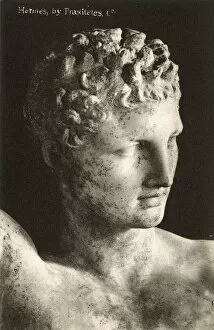Praxiteles Collection
Praxiteles, a renowned sculptor of ancient Greece, left an indelible mark on the world of art with his masterful creations
All Professionally Made to Order for Quick Shipping
Praxiteles, a renowned sculptor of ancient Greece, left an indelible mark on the world of art with his masterful creations. One such masterpiece is the marble statue of Hermes, attributed to Praxiteles I. This exquisite sculpture captures the grace and elegance of the messenger god, Hermes, as he stands tall with his characteristic caduceus in hand. Another iconic work by the Capitoline Venus, a copy of which can be found in Rome. This marble statue showcases Praxiteles' exceptional skill in depicting feminine beauty and sensuality. The intricate details and lifelike form make it a true testament to his craftsmanship. The influence extended beyond individual statues; even reliefs were attributed to his school. A prime example is a marble slab from Mantinea, Greece that depicts the Muses. The delicate carving and harmonious composition reflect the artistic principles associated with Praxitelean style. One cannot overlook "Hermes and the Infant Dionysus, " a captivating scene captured in detail at the Archaeological Museum of Olympia in Arcadia. Here we witness Hermes cradling baby Dionysus with tender care—a touching portrayal that exemplifies both Praxiteles' technical prowess and ability to convey emotion through stone. The legacy continues with female statues originating from works by Praxiteles or his school during the 4th century BC. These sculptures embody timeless beauty and exhibit an understanding of anatomy that was ahead of its time. Amongst these remarkable pieces stands out another depiction of Venus—the Capitoline Venus—showcasing yet again Praxiteles' mastery over capturing feminine allure through marble. Not limited to mythological figures alone, satyrs also found their place among Praxitelean creations. A resting satyr statue reveals not only his attention to detail but also his ability to infuse life into inert stone.




































